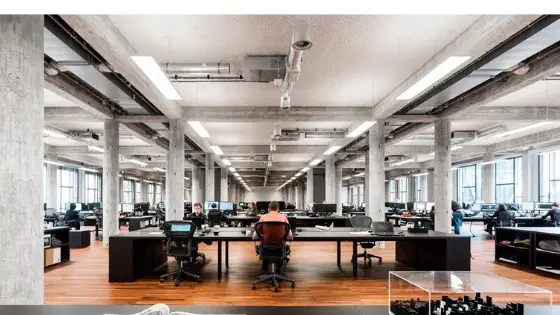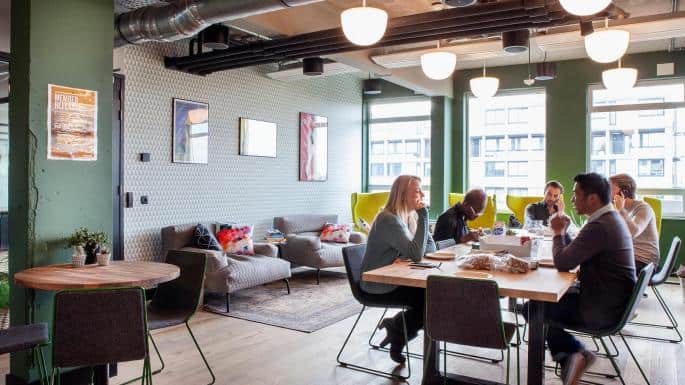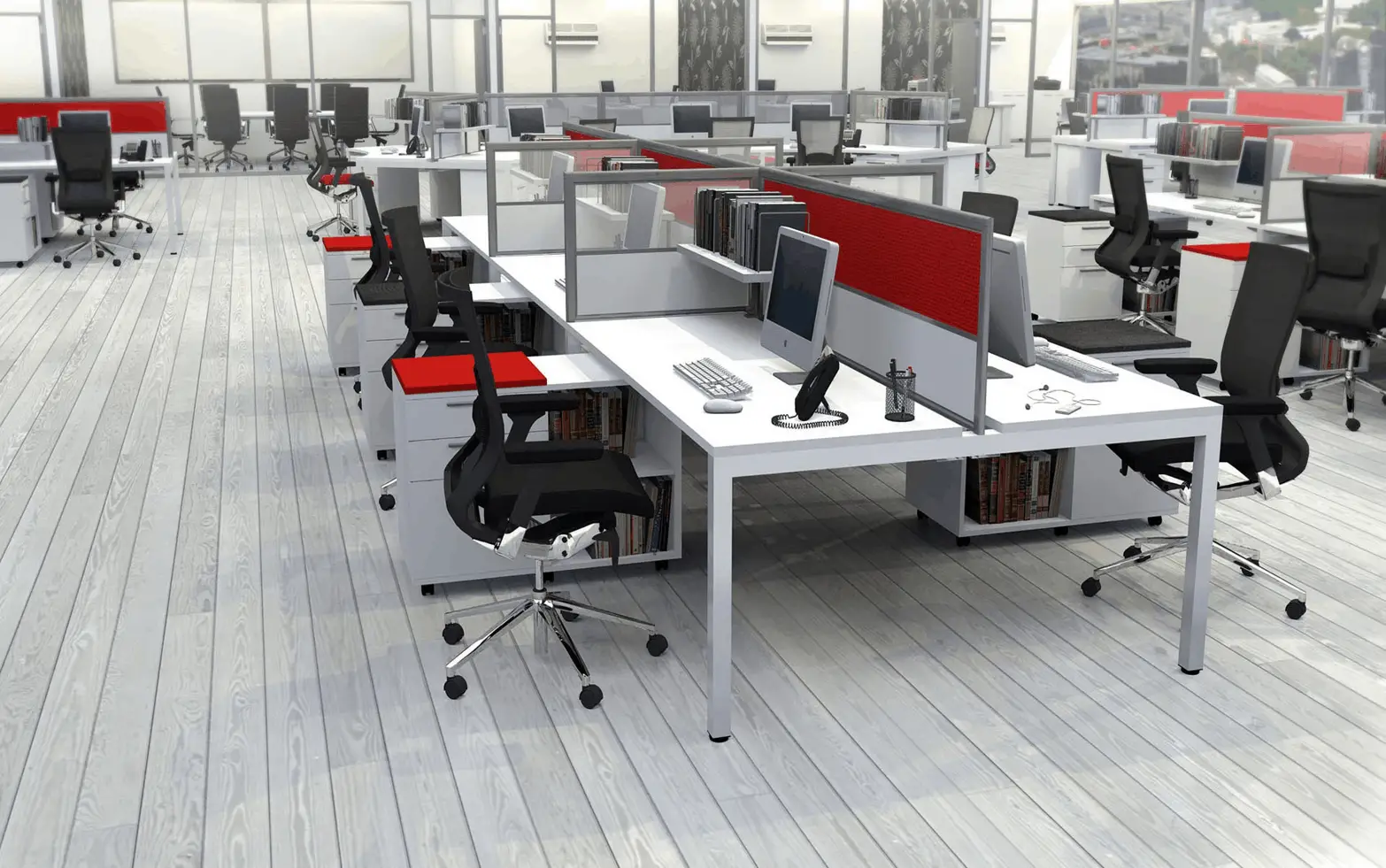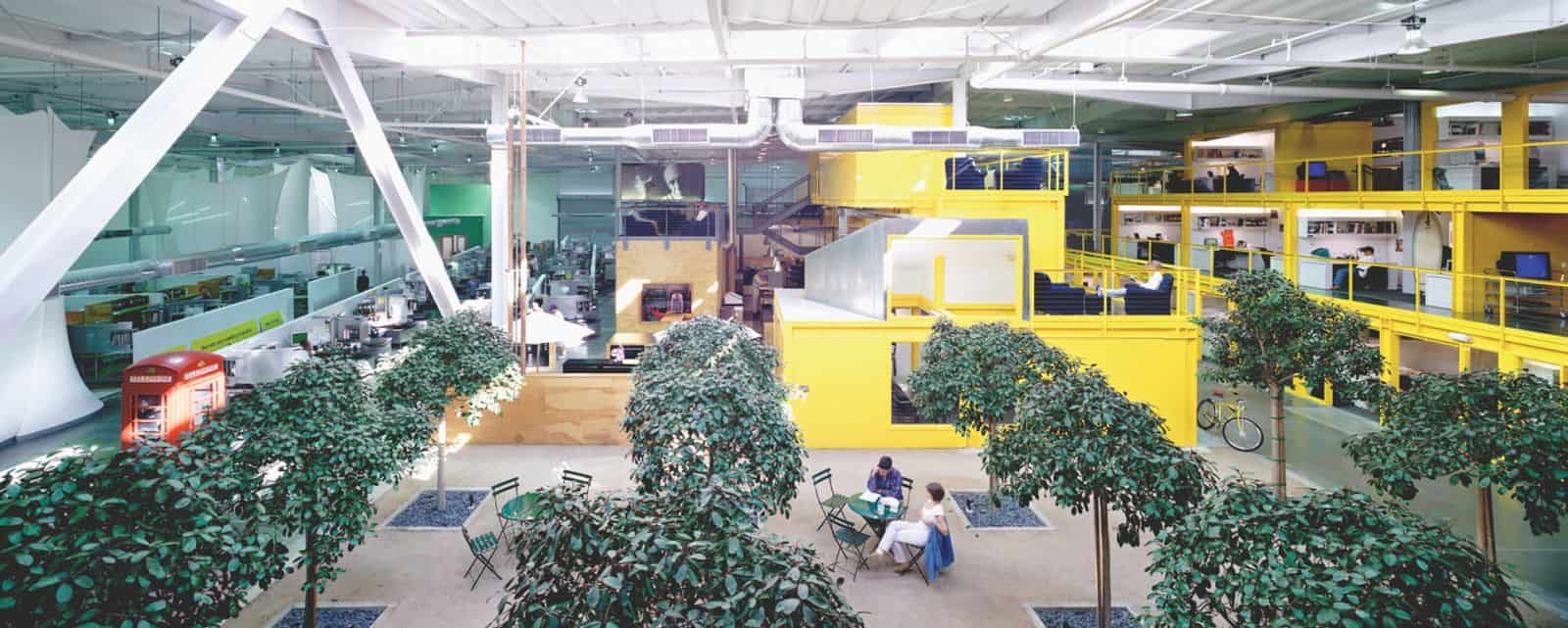Weddings are often joyous events in which the bride dreams of everything running smoothly. For many, however, the seating plan for the reception is a source of stress and even contention. When an experienced wedding planner steps in, he or she brings a few tricks along to make the seating arrangement smart.
A smart seating arrangement aims to keep arguments at bay, the singles comfortable, and groups in a communicative environment. This is true for both wedding receptions and open offices. No bride wants her divorced parents arguing throughout dinner at her wedding, just as no employees want to listen to two coworkers verbally sparring all day while they are trying to work. Arranging the seating in a way that increases productivity in the office and is inspired by wedding planning tips is an effective way to create a truly useful open office seating chart.
There are a number of tips and tricks that wedding planners use in creating a wedding reception seating plan. Those same tips and tricks can be slightly altered to develop a sensible office seating plan that works efficiently and boosts productivity. Using these pieces of advice are sure to help you in achieving a great seating plan in your own office.
10 Tips For Developing Your Seating Plan:
-
Remember what shapes and space you have to work with. Don’t overestimate your floor space or how many desks or tables can fit in the space.
-
Put friends together and allow them to bond further. A team works well together when all of the parts are in tune with one another.
-
Seat supervisors amongst the other individuals but ensure an unobstructed view of those under them, just as parents are in a wedding reception. This allows them to be in the trenches with their employees but also monitor them from afar.
-
Categorically group departments, but be smart about it. This can create a sense of organization in a wide open room.
-
The use of sticky notes creates the ability to make changes in the seating plan at any time. It is not set in stone.
-
Consider using assigned tables rather than seats. It gives employees some wiggle room for comfort.
-
Allow some crossover for multi-departmental employees. This is especially true for those that work best with a certain group of people.
-
Refrain from putting the talkative worker by the break room. Inspiring an employee to take a break every few minutes is not the goal you’re aiming for.
-
Take the thoughts of your employees into account. Their happiness should be important to you.
-
Don’t forget ADA accommodations and more than what is legally required if necessary. Show your handicapped employees that they are valued as well.
1. Consider the Shape of the Desks and the Floor Plan
Imagine the variety of tables used in weddings. Some have round tables, some use rectangles, others use something totally different. The same goes for an office. While traditionally office desks are rectangular, modern workspaces have transformed. Many employers offer a small square desk while others are trying out the long, bench-style seating. Whatever the shape of the desk or surface in use, it is important to consider how it might affect the room and the layout when choosing a seating plan.
When desks are long, rectangular shapes, there are fewer options as far as how to situate them. Bulky desks typically have restricted seating. Imagine rectangular tables at a wedding reception. You wouldn’t want to squeeze in as many guests as possible. Despite the fact that 8 people can fit at the table, they would likely be bumping elbows and uncomfortable.
In an office space, employees appreciate a semblance of their own space. If sharing a workbench, it is important to give each person their own designated area so that others refrain from crossing into it. If desks are aligned side by side, ensure that there is plenty of space for each person to work on their own.
In addition to creating space for employees, it is important to consider how the desks are positioned. While certain shapes leave little in the way of options, there are a few things that should be thought about when it comes to office seating planning. Bench seating means that someone is usually facing the opposite direction to the focal point in the room. If the focal point is the manager’s desk or an item designed to inspire productivity, these people are facing the wrong direction and likely missing out. Individual seating means that all can be facing the same direction.
2. Place Friends close Together
At a wedding, the planner generally puts people together that already know one another. Friends are seated together to be sure that they will have a good time. Not all people enjoy immersing themselves in strangers and being told to mingle. In fact, for a large number of people, this is incredibly uncomfortable. By placing friends close together, weddings and offices have a better chance of being comfortable, fun, and efficient. The key is to have friends together, yet mixed with others in a way that allows even those less familiar with the others to participate.
Think about a wedding reception table. You might have six guests sitting at the same table. Four of the six are good friends. One of the remaining two is friends with one of the four friends. The final person at the table is friends with the other single person. This allows the mutual friend(s) to bridge the gap between strangers.
In the workplace, it might seem as though you want friends to sit away from one another in an effort to keep productivity up. In reality, working with those that you have a good relationship with is all part of increased productivity. Friends have the ability to work more fluently, understand one another, and bring in other employees into the mix. It is a good idea to plan seating in a working environment in this way.
Studies show that working with friends make you more productive. Although previous beliefs thought friendships in the workplace were a distraction, the opposite is true. In fact, having a friend that is driven and work-focused encourages his or her friends to follow the same path. It is motivating for others to experience a friend working hard.
make you more productive. Although previous beliefs thought friendships in the workplace were a distraction, the opposite is true. In fact, having a friend that is driven and work-focused encourages his or her friends to follow the same path. It is motivating for others to experience a friend working hard.

3. Treat Supervisors as You Would Parents
At a wedding, the parents of the bride and groom are often seated near the head table. Sometimes they are at the head table with the bride and groom. While it is not necessary to do this in an office environment in which supervisors and managers act as the parents in this situation, it can help to have them in a place where they can see what is going on.
The purpose of having parents near the head table is so that they can see their children on their big day. Most commonly, the bride’s parents and the groom’s parents are seated together. By seating supervisors and those in similar roles in a position to where they can look out at their team of employers and supervise more easily and from a distance. Hovering managers often create more stress, but one that is nearby and not on top of the workers is ideal.
There are a number of reasons that this seating arrangement for the boss is ideal. For one, being close enough to hear but not interfere often allows employees to feel comfortable. Supervisors would have the ability to feel how the atmosphere is and if it might need adjusting. It will also decrease the number of meetings throughout the day, as supervisors are easily accessible. That means that they would also be easy to talk to.
but not interfere often allows employees to feel comfortable. Supervisors would have the ability to feel how the atmosphere is and if it might need adjusting. It will also decrease the number of meetings throughout the day, as supervisors are easily accessible. That means that they would also be easy to talk to.
When management and supervisors are in the thick of it like the lower-level employees, workers can talk to them just as they would any other coworker. It removes a sense of superiority and brings the boss down to their level. Smoothing out this common communication challenge is one that a good seating plan will fix. (Read one of our related articles – Quick Step by Step Guide—How to Plan Office Seating )
)
4. Use Categories to Group Departments or Specific Jobs
Sometimes division creates problems. However, when done properly, dividing up departments and jobs can be helpful. For example, while the boss should be right in the middle, the division of departments is a good way to keep those working most closely near one another. This would decrease the time it takes to discuss a project in person, as many workers would not have to leave their chairs.
This happens in wedding seating by grouping together kids, families, coworkers, etc. It wouldn’t make much sense for the groom’s coworker to be in a group with the bride’s siblings unless they had some other connection. The coworker would likely feel left out or the odd man out. A wedding planner would group the bride’s siblings with mutual friends or even siblings of the groom. The commonality between the two groups would help to meld them.
When planning an office seating chart, it can be helpful to think about the groups that each individual belongs to. Even in an open floor plan office, research and development can be arranged in a specific area while finance and accounting can be across the room. There might be a slight overlap between some groups, but it will cut down on the need to cross the room if the person an employee is working with is at the next desk over.
It is not completely necessary to separate departments from one another, but some division is smart. Although specific departments might be grouped together, they can be easily seated next to another department in which they work with most frequently on the edge of the division. For example, the marketing department might require relatively frequent conversation with the research and development team. By seating the two groups next to each other, those that require the most interaction with the other department can be seated along the end.

5. Use Sticky Notes to Create a Seating Chart
You might often see a wedding planner utilizing sticky notes to arrange and rearrange seating prior to the big day. This is an efficient and simple way to plan seating so that changes can be made painlessly. It is also a good way to realize that seating arrangements do not have to be set in stone. Although wedding guests are typically expected to sit where the wedding planner had assigned them on the day of the reception, there is no rule that says that office seating cannot be switched around from time to time.
This is where office seating planning can do something different than a wedding planner might – move people when things are not working out. With a sticky note seating chart, employers have the ability to visualize how workers are placed and why. A lot of wedding planners will also use a corresponding notebook to make notes on people, personalities, a list that defines who to separate, and more. Doing this with your office seating plan can be helpful as well.
In larger companies, it can be difficult to know every single employee on a personal level. Choosing where to seat an individual that is only known on the surface might pose a challenge. For instance, an employer might know that John is great with numbers and works quickly to determine budgets. However, he or she might not know that John works far better in a quiet environment. Placing John in the center of the room is not an effective or productive seating plan.
By using sticky notes in combination with actual notes on the individuals, an employer can do better to cover his or her bases. The facts about the workers would likely have to come with those that work more closely with them. This means that seating planning should be a group effort. Because of the varying opinions and many likely changes, sticky notes are sure to make the process much easier.
6. Think About Using Assigned Tables Over Assigned Seats
Sometimes assigned seats can feel incredibly “grade school.” By allowing employees to choose their own seat at a specified table, they are given more freedom and ability to make their own decisions. It also means that people are not forced to work right next to the same person every day.
Having the ability to change up one singular aspect of your day can greatly improve productivity. In fact, the most productive employees are those that are willing to make small changes. Without change, productivity will be lucky to remain at the same level and not fall behind. One change that might be good for companies is switching to bench or table seating in an open office.
Using open office style benches and workstations, employees have the ability to collaborate far easier than they would at individual desks. Other benefits include the ability to work individually in addition to working with others, the build up of employee morale, and the overall efficiency this style of seating offers the business. Far more individuals can fit comfortably in bench style seating than when each person has their own desk.
Comfort can also be more easily found even tables or benches are assigned rather than specific seats. This is because there might be slight quirks that employers don’t take into consideration. For example, if there is a draft present, one employee might avoid the seat it is most directly aimed at. Another employee might prefer the flow of air from a draft. In the case of some workers, a draft would be nice on some days and too cold on others. Allowing employees the freedom to choose where they should sit at a table increases the chances of their comfort, thus increasing their productivity.

7. Arrange Multi-Department Employees Based on How They Work With Others
There are a variety of positions within a company that work within multiple departments. Imagine a position that is grouped under Human Resources but works more with management. While it might make sense to seat this person in the HR section on the seating chart, it might also be necessary to place them where they are needed or used the most. More importantly, employees working in multiple departments should be placed where they will work the best.
It is no secret that many people work best with one particular group of employees over another. In a wedding reception, imagine the blend of two families coming together. Sometimes it is just the perfect blend of personalities, others it might be because of the subject of the work or topic at hand. No matter why a worker works best with a specific group, it is important to encourage that relationship by seating the two parties near one another.
As mentioned previously, it can even be helpful to place to two departments nearby in general. This way others in the two groups can work together easily as well. A lot of times there is a greater connection between varying departments than just one employee. By allowing various employees from both departments to sit near one another, there is a greater chance of good collaboration not only between employees in a single department but between employees in neighboring departments as well.
Additionally, by placing two employees together from different departments together, others have the ability to expand upon their own normal collaborating partners. As with the example above, the HR team would have more interaction with other departments if they had to be near their HR coworker and the individuals from Marketing simultaneously, for example. (Read one our related articles – Create a Seating Plan That Works Best for Your Team )
)
8. Be Selective with Who is Seated Near The Break Room or Food
Think seriously about who might be most focused on work if he or she is seated near the break room. There are a number of employees that would struggle with getting tasks accomplished if they could see all of the action in the breakroom or were close enough to smell the coffee. Seating an individual that struggles with focus right by the break room would likely be a mistake.
For many people, sitting by the break room would be a distraction. Think of a wedding reception. Would the wedding planner be cautious about putting certain individuals near the food? It would be smart to keep the kids’ table away from the food area – it would mean less chance of small hands grabbing at everything unknowingly and also keep them from walking up to cut in line when it isn’t their turn. In an office, the situation is a bit different, but the idea remains.
If there is a particularly chatty employee seated close to the break room, there is a chance that this person would not only interrupt their own work to take a break with someone getting coffee, but they might distract employees in the break room from returning to work. It is best to place an incredibly focused employee or a supervisor near this area.
Without the ability to tune out what is going on at the coffee maker, any employee seated near it would be hard-pressed to continue working. Even a focused employee near the break room might want to invest in a pair of high quality noise canceling headphones. It is also a possibility for the employer to put up a partition to prevent too much noise and distraction from making its way onto the working floor. Even so, it is best to have someone incredibly work-focused in this space.

9. Attempt to Seat for Productivity and Happiness
Sometimes seating does not have to make sense to the employer completely. There are some employees that work best sitting in a specific spot and will likely ask management to allow them to sit there. If that particular seat is best for the employee’s happiness and productivity, there is no harm in giving it a try.
Considering the desires of employees is a good way to boost productivity. Few employees will want to give a company their all if they are not given any consideration of their feelings. By openly discussing the options with employees, the company is showing that they care about the thoughts and ideas of their employees. This doesn’t mean that employers have to meet demands, but it is a good idea to take their feelings into consideration.
Wedding planners (or the bride) will sometimes give the guests options. For close friends of the bride or groom, they might ask who they want to sit with or where. However, after asking, they must make an attempt to work the guest’s request into the seating chart. Imagine being an employee that is asked where they would like to sit, giving your wish, and then being ignored. Because of this, it is important to consider the request and explain to the employee why it was not able to be accommodated if that is the case. (Read one of our related articles – Does It Matter Where I Sit In The Office? (Increase Your Productivity by 15%) )
)
Open and honest communication will not only prevent employees from feeling underappreciated, but it might also help to solve any seating concerns that have come up. If management wonders about placing a certain person away from a supervisor, it can be helpful to address the concerns with that worker. Once the placement has been made, remember that it does not have to be permanent.
10. Remember to Consider Handicaps
In the fun of designing a functional seating chart for wedding receptions or for the office, it is imperative that you stop to consider needs for the handicapped. There are a variety of considerations that should be made for any handicapped employees when it comes to developing a working seating chart. While the above-mentioned tips are important, they mean nothing if the employee is unable to get to his or her desk or is unable to work.
A blind employee that places a heavy reliance on their sense of hearing should be placed in a more quiet area. They might also require partitions or a way to decrease the noise coming from the rest of the office, especially if their work is audio based. Making the seating chart accommodating to this employee is crucial to their success and happiness at work.
Another disability needing accommodation in the workplace seating chart includes those in need of a wheelchair. Following ADA requirements for aisle size, having ramps in addition to stairs, elevators, and desks tall enough to seat someone in a wheelchair are all parts of accommodating a handicapped worker bound to a wheelchair. Ensuring the easy accessibility of the employee’s desk is not only legally required, but something that should be considered regardless of laws.
No matter what the disability is that requires consideration and accommodation, it is the employer’s responsibility to do so. Although it might seem obvious, remembering those with disabilities when creating a seating chart is crucial. Wedding planners tend to place those with special needs first so that others can be filled in around them. Doing so can save a lot of trouble.
Remembering these 10 tips when you develop your seating plan will help you to create one that works for your specific company. These steps of consideration have been useful in developing hundreds of thousands of wedding reception seating charts over the years and are sure to continue to do so. By using them in your office seating plan, you and your company will find that productivity can only go up from here.
Related Questions
Are office seating plans effective in open offices? Yes! A seating plan can help to determine the best place for productivity in each employee. It might take some changes here and there, but finding the sweet spot is highly effective in gaining office productivity.
Are cubicles a way of the past? Studies have shown that cubicles destroy employee morale and even affects employee health in a negative way. Because of this, many employers are seeking new ways to seat a wide array of workers.
Join the Open Sourced Workplace Community




